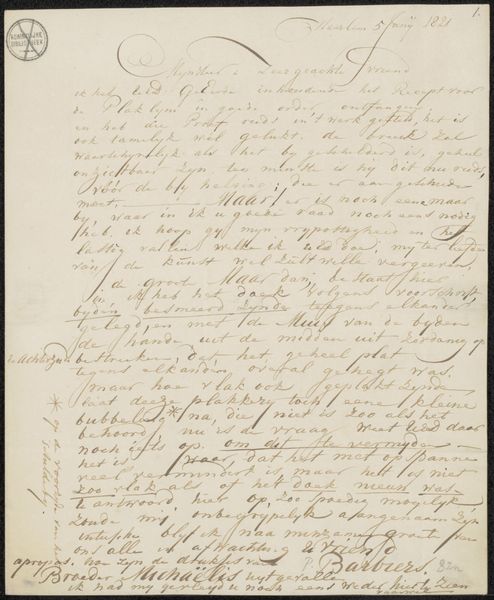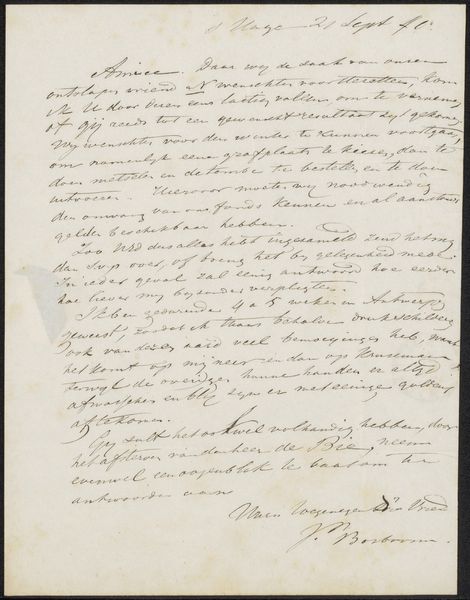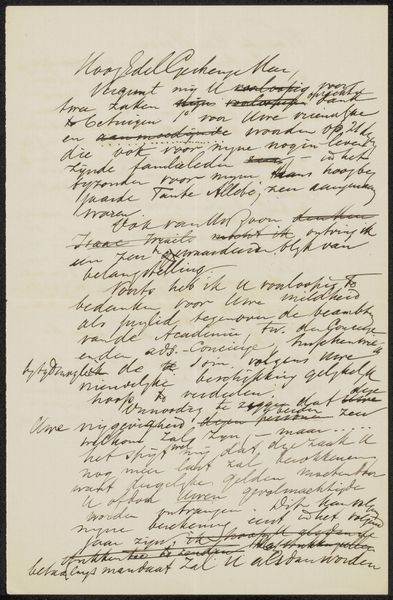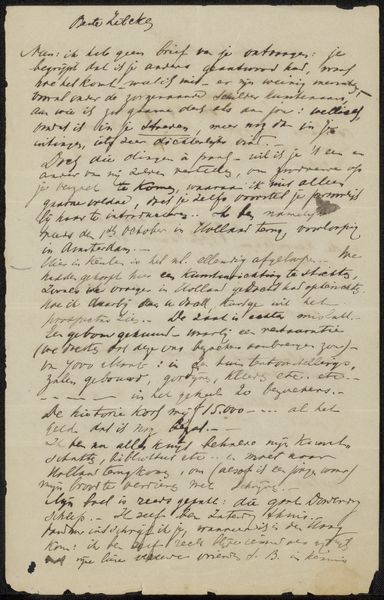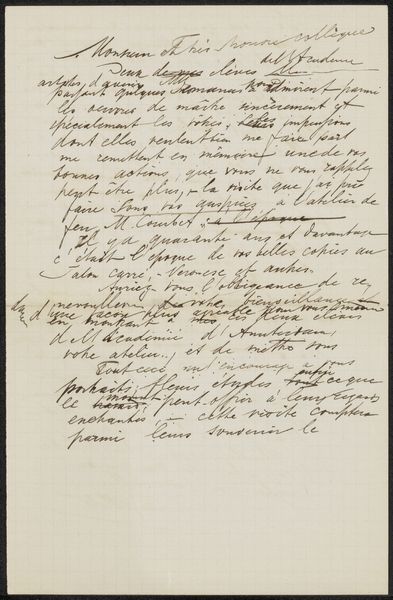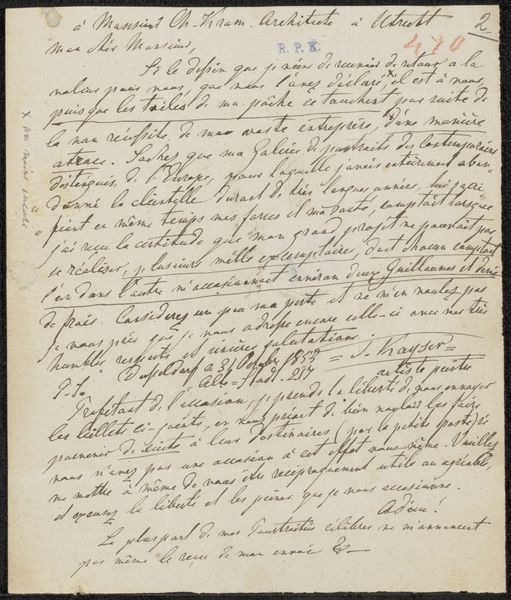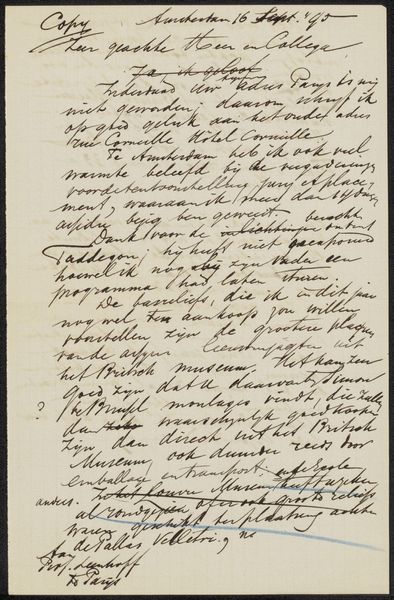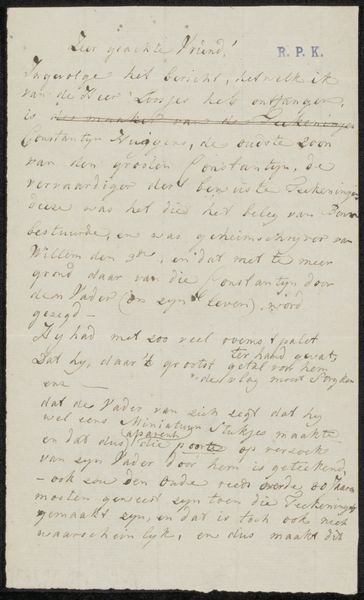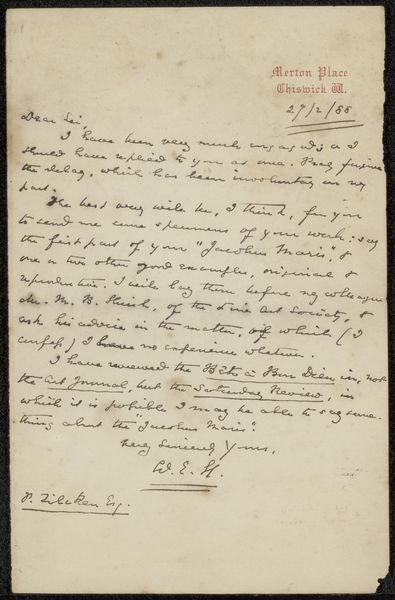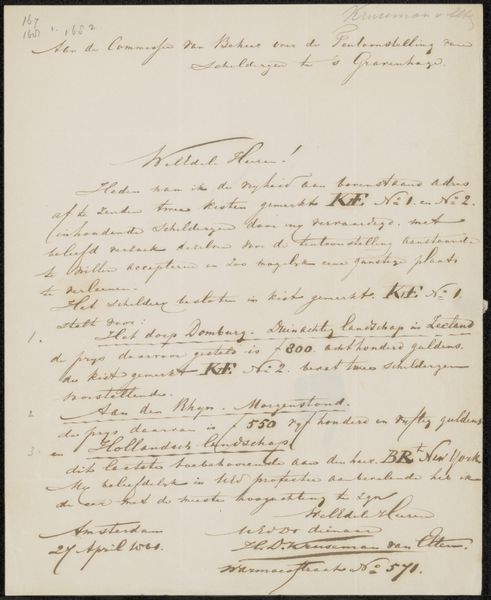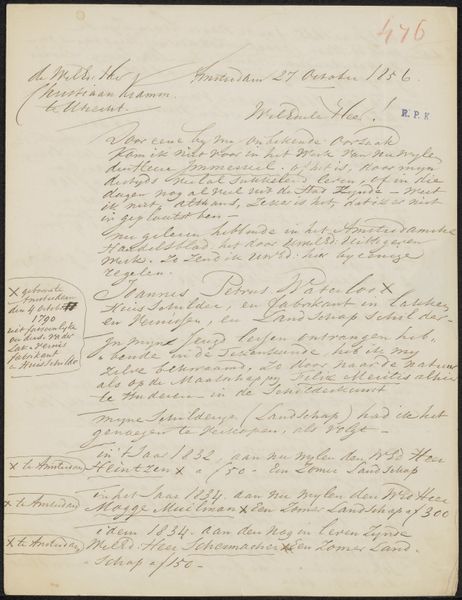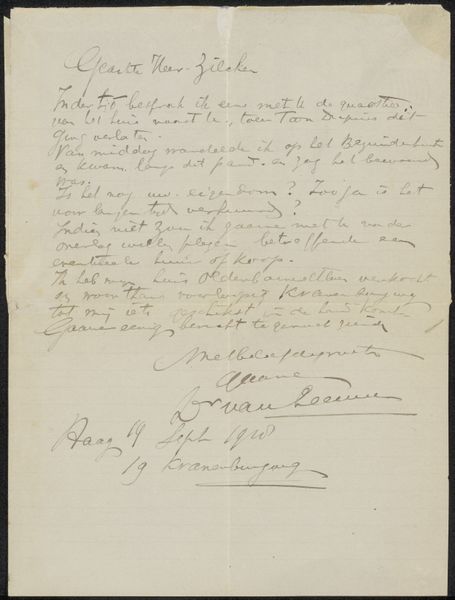
drawing, paper, ink, pen
#
drawing
#
aged paper
#
toned paper
#
sketch book
#
paper
#
personal sketchbook
#
ink
#
ink drawing experimentation
#
pen-ink sketch
#
ink colored
#
pen work
#
sketchbook drawing
#
pen
#
sketchbook art
Copyright: Rijks Museum: Open Domain
Curator: Oh, this looks like an intimate artifact. "Brief aan Philip Zilcken," possibly from 1891, a drawing in pen and ink by Eduard Karsen. There's a vulnerability to seeing someone's actual handwriting. What do you think? Editor: My first impression is the immense fragility imbued in this handwritten note on toned paper. There is a whisper of secrets here. But I think its aged appearance suggests so much more; that handwriting becomes another kind of portrait, situated within a specific historical context. Curator: Yes, exactly! The content looks to be a letter—we know it's addressed to someone named Philip Zilcken. Perhaps a fellow artist or a patron. You can see Karsen mentions sending something, also refers to financial matters and the price of things. It almost feels invasive to peek at their personal exchanges. Editor: This personal quality, I think, touches on something crucial, this tension between accessibility and privacy when considering historical documents. These fragments offer invaluable insights, particularly as letters reveal socio-economic conditions and political contexts in art networks. Was Zilcken a buyer of Karsen's work, perhaps? What dynamics are at play here? Curator: Oh, very possibly. Or a friend. And consider that Karsen chose pen and ink - tools readily at hand, suitable for capturing thoughts on the fly, reflecting an immediacy to this. Editor: True, yet it also echoes traditions in that moment; handwriting being almost an assertion of social status through formal exchange in correspondence. A slowly vanishing method of communication which makes it almost…performative, right? It signifies intimacy while preserving distance via language and conventions. Curator: Ah, a thought! Considering this performativity of communication. A dance that now allows us to consider how meaning morphs in ways perhaps unintended by the artist as a note in a sketchbook. I appreciate that Karsen seemingly dashed this off for immediacy's sake, not really envisioning us pouring over it today. It underscores how we shape interpretations from surviving details and chance. Editor: Absolutely, and situates us, as modern viewers, in a position of power, but also of responsibility, requiring critical engagement. How might this sketch shift perceptions and recontextualize Eduard Karsen as more than simply a name in art history? Curator: Seeing the humanity—it's what connects us beyond mere historical labels. Editor: Precisely. These echoes out of the past require of us conscious conversation, yes? To consider carefully the politics inherent in the preservation of knowledge, which shifts into wisdom in its ability to illuminate these past contexts and relations.
Comments
No comments
Be the first to comment and join the conversation on the ultimate creative platform.
